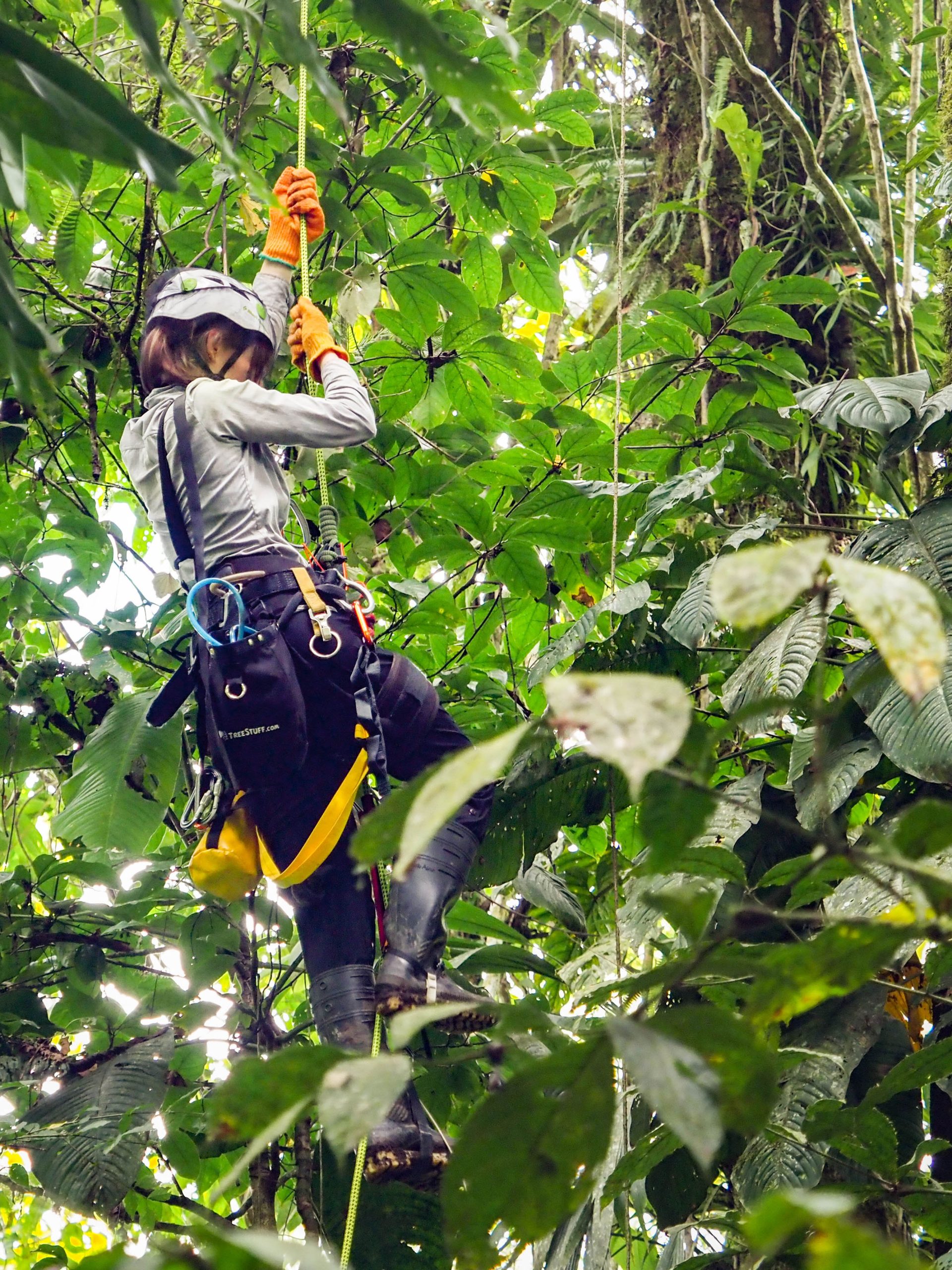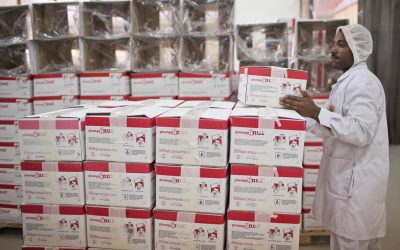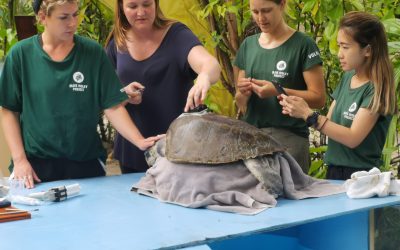A few months ago, I went tree climbing to become a certified tree climber, advancing Arribada’s goal to improve the design and installation of arboreal technology and provide project design and field installation assistance to our partners. The first step toward this goal was checking on the function of the Arribada Arboreal Monitoring Platform (AAMP) camera traps installed at the Crees Foundation research station in the Peruvian Amazon in 2017, designed to collect and wirelessly transmit photographs and video from the forest canopy.
Camera traps are common tools used by conservation and biological researchers to assess biodiversity, species presence, animal behavior and ecosystem health. However, camera traps in tree tops are rare because the canopy is challenging to access, equipment is difficult to install and maintain, and data is tricky to collect.
The AAMP hoped to ease canopy data collection by connecting a network of cameras to Wi-Fi. Each camera was placed high in the canopy with an unobstructed path line of sight to a data receiver from which researchers downloaded data; no tree climbing required. These types of wireless connections to data can help researchers understand detect and study events as they happen, improve data sharing among organizations and improve camera maintenance efficiency by detecting problems as they occur, rather than finding out about them months later. However, real-time transmitting systems are also complex, can require more maintenance and be difficult to establish in remote areas.

With these thoughts in mind, how did the AAMP perform a year and a half later and how useful was the system? In early 2019, I climbed back into the rain forest canopy to find out.
We had some good news. After a 40 m climb through the canopy’s sweat bees, flies, thorny vines and wasp nests, we found the cameras still attached securely to their tree branches, looking out over the forest. Although the outside crevices were dirty and hosting ant colonies and spiders, the pelican case had protected the components inside which showed no obvious signs of damage. The cameras were even still receiving power from their attached solar panels.
However, we noticed some problems with the design. The data receiver was an obvious weak point. While researchers benefited from remote data collection while the system was running, any problems with the receiver knocked-out access to every camera in the network, stopping all data transfer. To have a clear line of sight to the receiver unobstructed by trees and provide enough light to the solar panels, the cameras needed to be emergent from the canopy. In some cases, this was too high observe species living in the low or mid canopy. The internal hardware of the cameras made up of multiple computer boards and connectors. While they did not appear damaged, a closer look showed some of the connectors had suffered in the humid climate, creating some inconsistency in functionality even with full power from the polar panels.
These challenges are giving us ideas for a more functional redesign, including updates to the solar power system, hardware and wireless transmission method. Detached solar panels would give flexibility for the solar panels and cameras to be installed at different heights for maximum sun on the solar panels and optimal camera placement for wildlife. Advancements in low power, affordable, integrated computer boards, such as the balenaFin, could simplifying the hardware with one computer board, creating less vulnerability and easier maintenance. Wireless data access could be improved by moving away from a network system toward an individual system where data can be downloaded by walking directly underneath the camera. Advantages to this collection approach would be no network failure prohibiting access to all cameras, flexible data gathering at times chosen by researchers or land managers and better connection to the forest as walking through to collect data allow for observation of any changes that may not be noticed with remote data collection. The transfer could take place via Wi-Fi hot-spot, Bluetooth or physical contact of devices through technology like Keyssa’s Kiss Connectivity.
While these ideas have their challenges, we look forward to experimenting with new designs and technologies to improve the accessibility and functionality our system. With luck, these ideas can help not only the AAMP, but any conservation tech placed in tree tops. And I look forward to getting back into the trees to find out.
Post written by Anne Dangerfield, Arribada Initiative project manager, field coordinator and tree climber
Thanks to Eric Folmer, the tree wolf, for helping tree climb in the Amazon and to Joanna Turner, a software engineer, for checking on the AAMP design during the 2019 field season!




Thanks for the update, any chance of photos of any of the failures, so other researchers might benefit / iterate on your designs?
Thanks Steve, that’s a great idea for a follow up post and we’ve noted it.